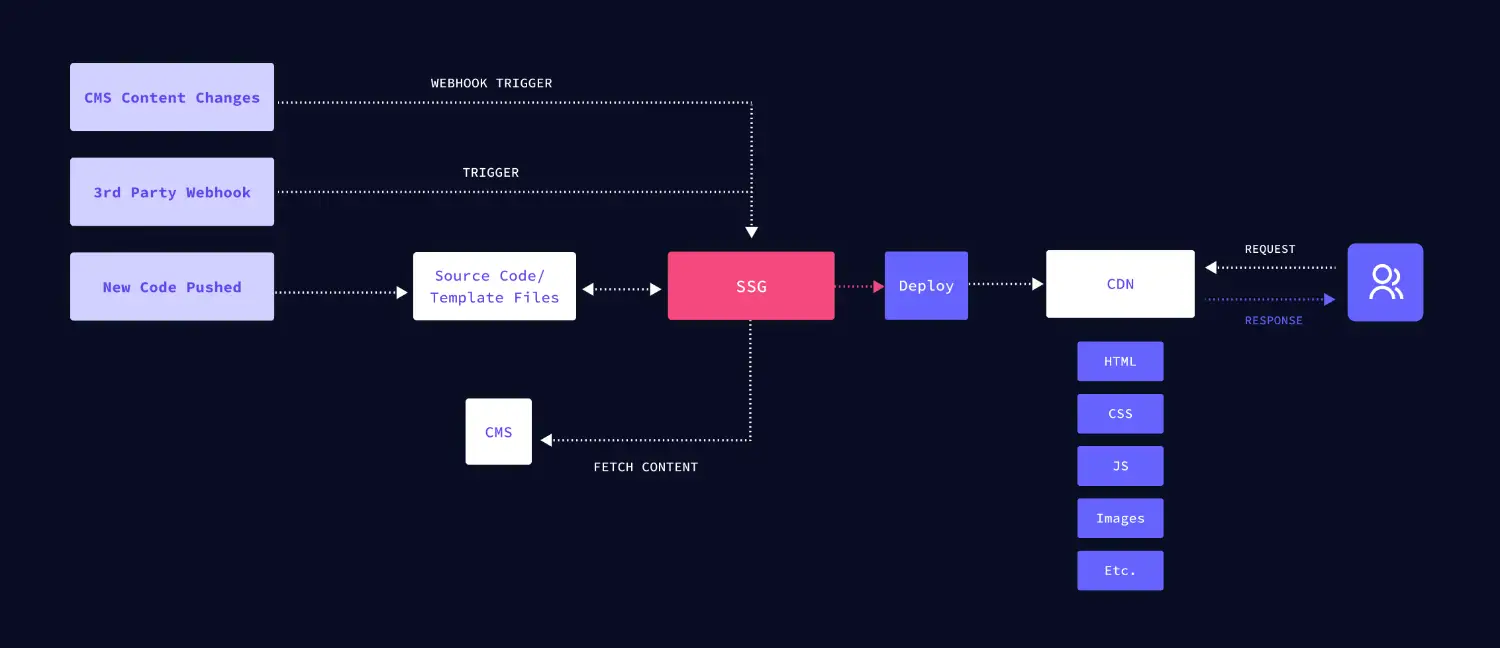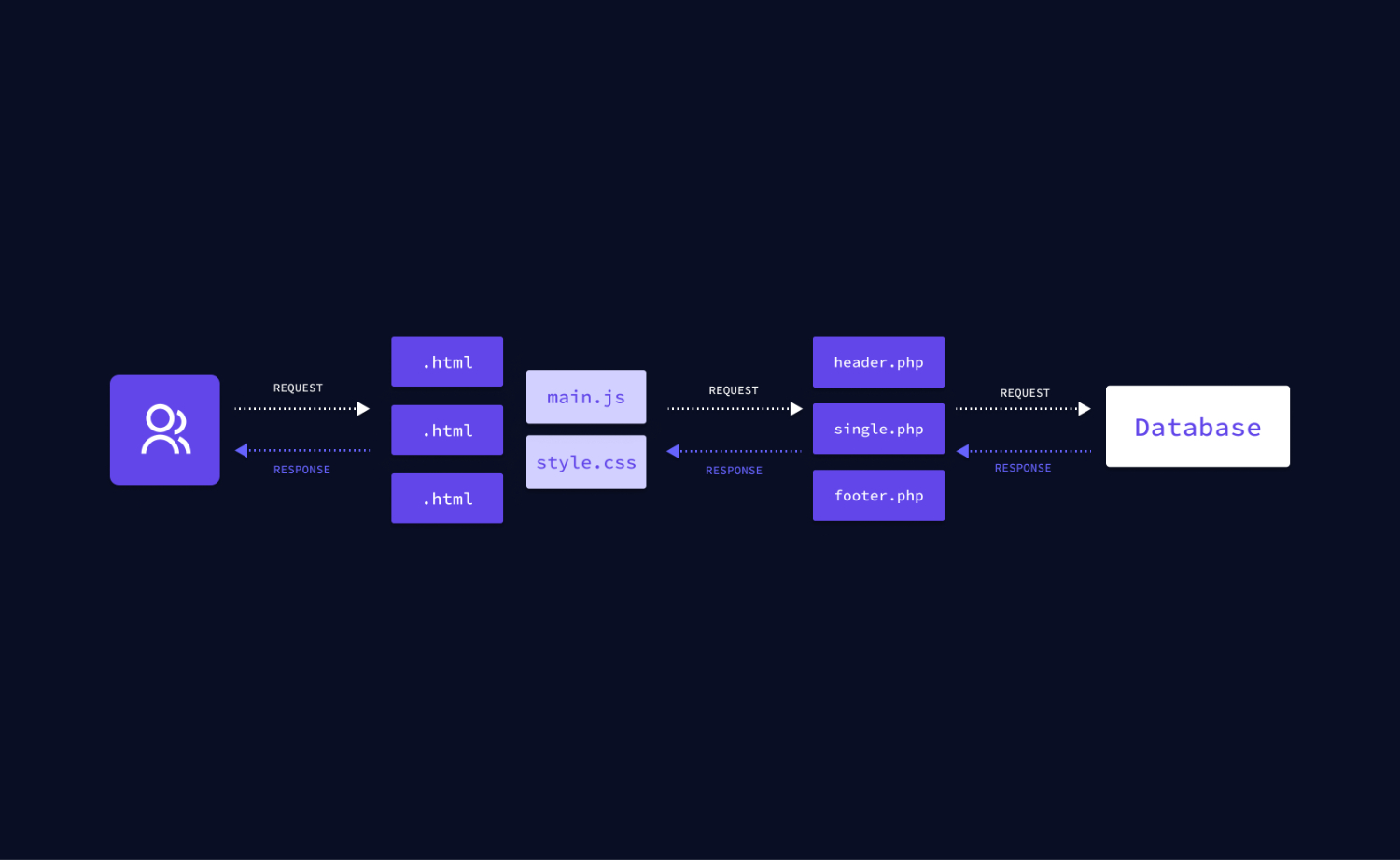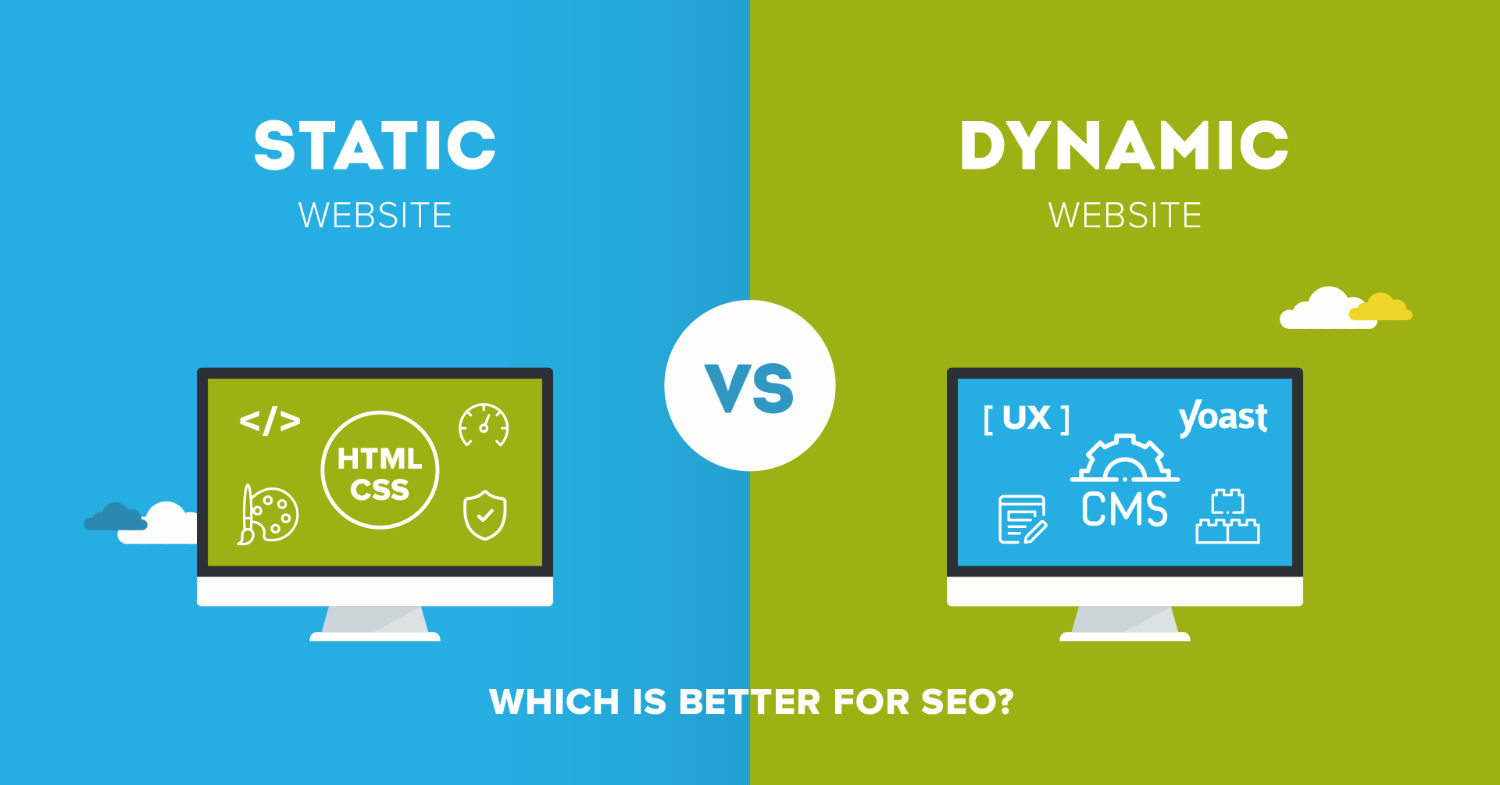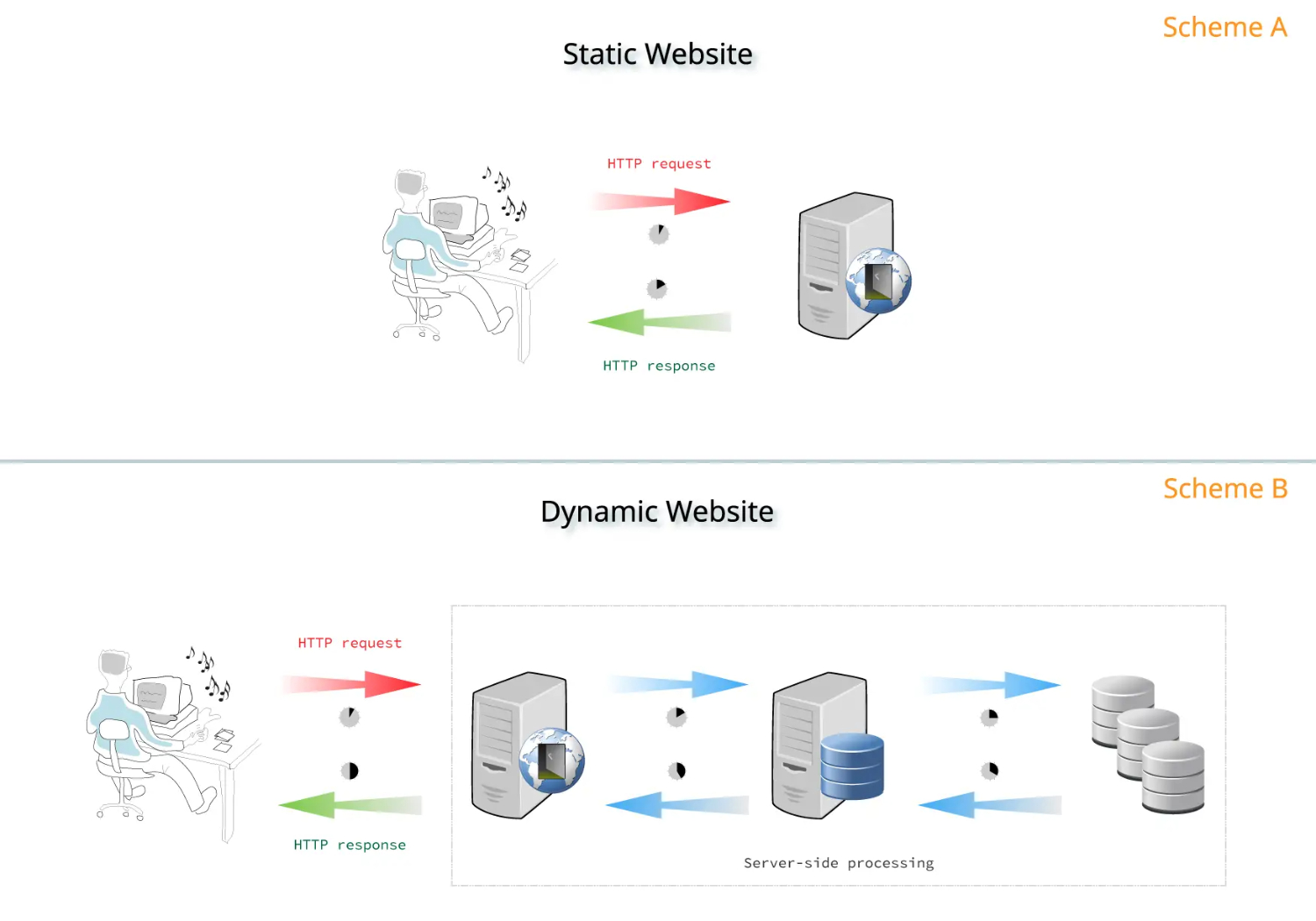Having a website is an important step for any business, and it can be difficult to decide which type of website — static or dynamic — is the best option for your needs. Are you a business owner who needs help understanding the difference between static and dynamic websites?
This article will provide a detailed comparison between static and dynamic websites, so you can understand the features of each and make an informed decision. We will also discuss the implications of each type of site, including functionality, user experience, and security. We’ll look at how they are coded, their maintenance requirements, differences in performance, ease of use, and costs.
The Kinds of Websites: Static Websites vs Dynamic Websites
Two of the most prevalent websites nowadays are static and dynamic. What is the difference between static and dynamic website, you ask?
As the name implies, a static website is one that is rarely updated. It consists of web pages containing fixed content that can only be updated manually by changing the code. These types of sites are ideal for businesses or individuals who want to showcase their information on a simple platform without requiring continuous updates.
On the other hand, a dynamic website is one that has constantly changing content and can be updated regularly without needing any manual coding changes. Server-side scripting languages like PHP, ASP.NET, or Ruby on Rails are used by dynamic websites to create web pages in real time in response to user requests. This type of site is ideal for eCommerce businesses, news portals, or blogs where new content gets added regularly.
When it comes to deciding between static vs dynamic websites, consider your business needs. Both of them very well have their benefits and drawbacks and may suit one type of business more than the other. Another tip to boost up your business is knowing your way around Website Impression and Click. Find more about that here!
So when it comes to static websites vs dynamic websites, what should you be choosing?
Static Websites: Overview
Static websites are a simple type of website that contains fixed content, meaning the information on each page remains constant and doesn’t change unless manually updated by the website administrator. These types of sites are typically written in HTML and CSS code, which is then uploaded to a web server for hosting.
Static Websites: Pros
Static websites offer unparalleled speed and simplicity. Because they don’t require any database connections or dynamic content generation, they can be loaded quickly and easily accessed. This is a boon for users with slow internet speeds.
Plus, static websites can be hosted on basic servers without any advanced features or security measures. Static sites are also easier to create and maintain, requiring less technical knowledge.
Static Websites: Cons
There are definitely some limitations to static websites. For example, they aren’t suitable for larger websites that require frequent updates or user-generated content like blogs or e-commerce sites. They lack flexibility when it comes to scaling up with growing demands. They also usually require more technical expertise to create and maintain compared to easy-to-use platforms like WordPress or Wix.
Overall though, when it comes to simpler projects with limited budgets and objectives, static sites can be an effective choice for a business looking for an online presence without extensive functionality requirements, underscoring the importance of understanding Enterprise Web Design.
However, for larger-scale enterprises with complex needs such as e-commerce functionality, interactive features, and robust content management systems, a comprehensive understanding of Enterprise Web Design becomes crucial for delivering a tailored solution that aligns with the organization’s goals and requirements.
Visit: How TO – Make a Static Website
Dynamic Websites: Overview
Dynamic websites use server-side scripting languages such as PHP, Python, and Ruby. This allows for data to be pulled from databases and other sources in real time, resulting in a more interactive user experience. Their structure makes them suitable for larger enterprises with higher traffic volumes.
If you want to learn about the Website Maintenance Cost in India, look no further.
Dynamic Websites: Pros
Dynamic sites offer more functionality to your business, no doubt. Why? Because dynamic websites are highly customizable and can support various types of multimedia content, such as videos, music players, and animations.
Not only that, but they allow for personalized experiences based on user input or behavior. E-commerce sites use dynamic websites to display product recommendations based on the customer’s purchase history or browsing patterns.
Dynamic Websites: Cons
It is a known fact that dynamic websites require more maintenance than static ones due to their complex structure and reliance on server-side technologies. They also tend to load slower than static sites since they have to retrieve data from databases before displaying it on the page.
Despite these drawbacks, dynamic websites remain popular due to their flexibility and scalability for businesses of all sizes. Dynamic sites do require more resources and expertise to set up initially.
See Also: Website Development Cost: What is the cost of making a Website?
What about the SEO Impact of Static Websites vs Dynamic Websites?
When it comes to SEO impact, the difference between static and dynamic websites is pretty significant. Remember that static websites are built using HTML and CSS code that doesn’t change unless manually edited. This means that search engines can easily read and index the content of a static website.
In contrast, dynamic websites are created using programming languages like PHP, which generate pages based on user inputs or database queries. The constantly changing content can create problems for search engines trying to crawl and index your website.
Another factor affecting SEO impact is site speed. Static sites tend to be faster than dynamic sites because they don’t require server processing time to load each page. This leads to a better user experience and higher search engine rankings since Google has indicated that site speed is a ranking factor in its algorithm.
When it comes to URL structure, static sites have URLs that are easier for users and search engines to understand. Dynamic URLs can often include unnecessary characters or parameters that may confuse users or make it harder for search engines to crawl your site effectively.
So, both static and dynamic sites have their pros and cons. But in terms of SEO impact, a well-optimized static site may provide more benefits. This will be in terms of indexing speed and URL structure clarity more than a dynamic one would.
Another great way to optimize search engine impact is Using Responsive Display Ads; check out the benefits to aid your business.
Security difference between a Static and Dynamic website
Static websites don’t have any backend code capable of processing user inputs or generating personalized content on the fly. This means that there is less risk of security breaches caused by malicious inputs.
On the other hand, dynamic websites rely heavily on server-side scripting languages such as PHP or ASP.NET. This is because they need to generate content for each unique request based on database data. This creates opportunities for personalization and interactivity. But, it also opens up more avenues for attackers to exploit vulnerabilities in code and inject malicious commands through input fields.
Another important factor to consider is how frequently website updates are applied. Since web browsers and CDN providers can cache static sites, they may not reflect changes made on the server until cache expiration times have elapsed.
This could mean that outdated versions with known security issues remain visible to users for longer periods than would be desirable.
Visit: Website Security & Protection: How to Secure a Website
FAQs (Frequently Asked Questions)
1. What is the cost difference between static and dynamic website?
Hosting and maintaining a static site is way cheaper than doing the same for a dynamic one. You can easily get your website up and running with a very small budget when it comes to static websites.
2. What are static sites coded in?
Just HTML and CSS. The server just serves up static files. There are absolutely no databases or micro-services involved.
3. What are dynamic sites coded in?
There are many options, but most are coded in a language such as PHP or Python. Databases and a lot of micro-services are involved.
Summing Up
In conclusion, choosing between a static and dynamic website depends on the needs and goals of your business. Static websites are easy to create and maintain but lack functionality and customization. Dynamic websites provide flexibility and interactivity but require more resources and expertise. Consider your budget, content, and target audience when making a decision.









